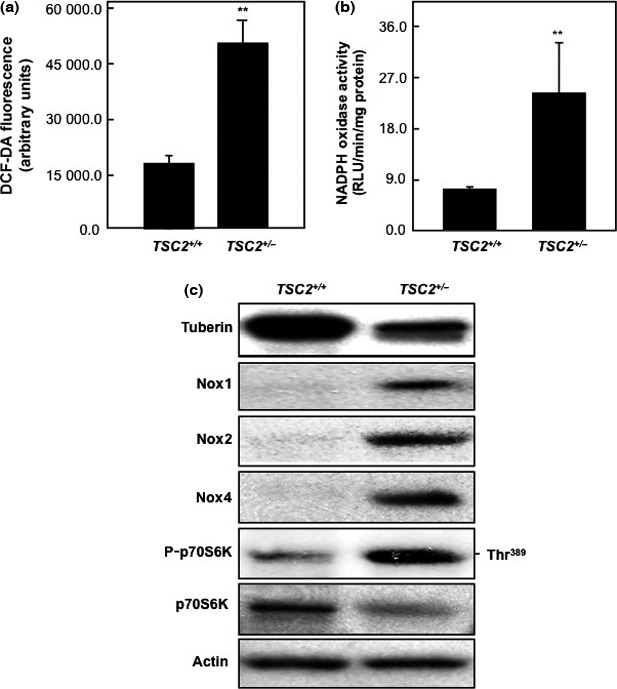Figure 1.

Tuberin deficiency increases reactive oxygen species (ROS) formation and NADPH‐dependent oxidase activity in renal primary proximal tubular epithelial (RPTE) cells isolated from wild‐type and TSC2 +/− rats. (a) Intracellular ROS production was measured using the peroxide‐sensitive fluorescent probe 2′,7′‐dichlorodihydrofluorescein diacetate (DCF‐DA) in RPTE cells. Deficiency in tuberin significantly increased ROS formation in TSC2 +/− cells compared to wild‐type cells. The data were quantitated, and the results are expressed as the means ± SE. (b) NADPH oxidase activity measured by lucigenin‐enhanced chemiluminescence in RPTE cell homogenates. Significant increases in NADPH oxidase activity were detected in TSC2 +/− cells compared to wild‐type cells. Production of NADPH oxidase activity is expressed as relative light units (RLU)/mg protein/min and normalized as a percentage of the control. **P < 0.01, significant difference from wild‐type cells. (c) Deficiency in tuberin results in upregulation of NADPH oxidase (Nox) expression in primary culture of RPTE cells. Cell lysates were prepared and protein extracts were loaded onto 7% SDS–polyacrylamide gels and transferred to a PVDF membrane. The membrane was incubated with anti‐tuberin or anti‐Nox1, anti‐Nox2, anti‐Nox4, anti‐P‐p70S6K, and anti‐p70S6K followed by specific HRP‐conjugated secondary antibodies. Actin was used as a loading control.
